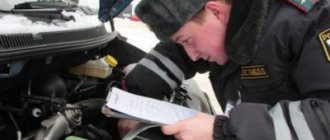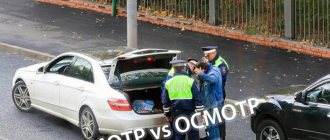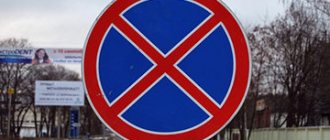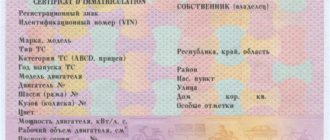Inspection and inspection are two procedural actions that have similar-sounding names, but are very different in the meaning of the procedure. In matters relating to restrictions on the right to personal integrity, it is necessary to refer to federal laws. Since the main fans of conducting searches are police officers, it is logical to evaluate these procedures from the point of view of the federal law regulating their activities.
Grounds for conducting a personal search
Before operating with this concept, it is necessary to find out what the legislation means by it. Its foundations are revealed in Art. 27.7 of the Code of Administrative Offenses of the Russian Federation, in accordance with it, this is an inspection of things on a person and with him. This is hand luggage (bags, briefcases, packages), luggage, hunting and fishing items, etc.
The citizen's consent is not required to carry out the procedure.
Personal search is an administrative procedural measure. The basis for its conduct is the commission of administrative offenses, information about the citizen’s possession of weapons, explosives, psychotropic and narcotic drugs.
Information must be obtained from reliable sources. They can be statements from individuals and legal entities, government bodies, police orientations.
Hand luggage inspection procedure.
A protocol must be kept in the presence of two witnesses or using video recording. If there is information that the person subjected to a personal search may have a weapon or show resistance, witnesses are not needed. They may also not be present if video surveillance or video recording is being carried out.
During this procedure, an examination of the body, clothing, and items in the citizen’s possession are examined. The integrity of things is not compromised. The citizen is examined, not searched. Everything discovered during the inspection is entered into the protocol. This should not just be a list, but a description of each item, indicating identification characteristics. If the violator is a minor or incompetent, then all actions are performed in the presence of legal representatives.
Search as a measure of administrative coercion used by the police
The powers of the police, unlike other services, cover almost all spheres and areas of social life and are regulated by procedural, administrative and legal regulations. Police officers do not require a court order or any other sanctions to conduct a search.
The inspection involves a multi-faceted action, it follows that it is subject to:
- personal belongings;
- vehicles;
- luggage when leaving or arriving in cities;
- luggage, hand luggage and personal belongings of subjects arriving in the country from abroad or departing on a trip.
The search can be carried out both with grounds, that is, when the subject violates the administrative order and attracts the attention of the police, and without them. The procedure for carrying out the procedure requires the strictest regulations prescribed by law. Police officers are obliged to strictly follow it, without crossing the lines, since in such cases the search and its results will be illegal and will violate the civil rights of the subjects to whom the administrative measure was applied.
There are two types of searches used by the police:
- Procedural, that is, carried out for persons convicted of violating administrative or public order.
- Preventive – can concern any person, as it is aimed at preventing crimes and ensuring the safety of others.
Who has the right to conduct searches of citizens?
In Art. 27.2, 27.3 of the Code of Administrative Offenses provides a list of government bodies whose responsibilities include monitoring the implementation of legislation in various areas.
The following officials have the right to conduct inspections and draw up protocols:
- Police - upon detection of offenses provided for in paragraph 1, part 2, art. 28.3 of the Code of Administrative Offenses independently or when officials contact them, Art. 27.2, 27.3 Code of Administrative Offences.
- The National Guard, as well as departmental and non-departmental security subordinate to it.
- Bodies exercising control or supervision over the implementation of rules for the use of transport.
- Military traffic police - in case of violation of traffic rules by military drivers in transport of the Russian Armed Forces, the National Guard, civil defense troops, engineering, technical and road construction units.
- Bodies monitoring compliance with legislation on environmental protection, forestry, livestock farming, fisheries, and water resources.
- Border troops, bodies of the Ministry of Internal Affairs, military personnel and other persons entrusted with the responsibilities of protecting the state border.
- Border Troops - when identifying administrative offenses in internal sea waters.
- Customs authorities - in case of violation of Customs rules.
- Drug control authorities.
- Carrying out counter-terrorism operations and revealing violations of the law under Art. 20.27 Code of Administrative Offences.
- Bailiffs who ensure the established order in the courts.
- Migration authorities.
How is a car search carried out?
Because inspection of a car in most cases does not entail any serious violations of the driver’s rights; let us dwell in more detail on the inspection procedure.
In addition to detecting a weapon and/or the subject of an administrative offense, an inspection can also be carried out if there is evidence that citizens are carrying weapons, ammunition, ammunition for weapons, explosives, explosive devices, narcotic drugs, psychotropic substances or their precursors, or poisonous or radioactive substances, to carry out detention, administrative detention of a person in a vehicle
It is worth noting that simply a police officer’s reference to the need to conduct an inspection of your vehicle is not a legal basis for conducting an inspection. All assumptions must be justified
The validity of suspicion is an evaluative factor. It is the police officer who is entrusted with the responsibility of proving the validity of the suspicion; if you file a corresponding complaint, intuition alone will clearly not be enough.
Based on the above, I would recommend the following algorithm for the driver’s actions when an authorized person demands to provide the car for inspection.
— Be sure to require the drawing up of an inspection protocol. If there is no video recording of the search, require the involvement of at least two witnesses to participate in the search;
— If possible, video record the actions of officials; be sure to record the reasons indicated by the official for conducting the inspection;
— Demand a copy of the inspection report. When signing the protocol, indicate all comments in the protocol.
The driver is not obliged to independently open the trunk, etc., but also does not have the right to interfere with the search, even if he considers the actions of officials illegal.
During the inspection of the car, authorized persons do not have the right to violate the integrity of the car’s upholstery, remove individual elements, or examine the contents of things in the car. Contrary to the statements of individual police officers, carrying out any special operations “Mak”, “Batiscaphe”, “Interception” etc., does not provide additional grounds for conducting a vehicle search.
The only exception giving the right to conduct an inspection of your vehicle for any reason is the counter-terrorism operation regime
. In this case, you can check with the police duty station whether such an operation is really taking place. Illegal actions of police officers can be appealed to higher management, the prosecutor's office or the court.
Specially for the Kafa newspaper, lawyer Dmitry Tsybulev
https://kafanews.com/novosti/100982/dosmotr-avtomobilya-rabotnikami-politsii-daleko-ne-vsegda-zakonen_2015-03-06
Procedure for carrying out the procedure by police officers
A personal search is carried out by officials authorized to perform this action and who have the right to draw up a protocol.
Mandatory conditions for production are the following:
- The searched citizen must be explained the reason (basis) for this procedure.
- Invite him to provide for examination documents, things and objects with which administrative offenses were committed.
- The search of a citizen is carried out by a police officer of the same gender as him.
- Two witnesses are invited. Their role can be played by people who must meet the following requirements: be over 18 years of age, have no interest in the case, sober, sane, not part of the squad, not familiar with the police, of the same sex as the suspect.
- The inspection procedure must be carried out in premises that meet sanitary requirements and exclude access by unauthorized persons.
- The person being searched is ensured: safety, health, dignity, confidentiality of personal life is guaranteed, except for cases provided for by law.
- When performing an inspection, if there is information about the presence of explosives or weapons, the procedure is carried out in the absence of witnesses. When filming video, the presence of the latter may also not be necessary.
- A protocol is drawn up in which all information received is entered.
- Discovered items to which all established methods of recording material evidence have been applied (description, measurement, photography, video recording) are confiscated. They are packaged, sealed and attached to the case as evidence.
- What is written is read aloud. The suspect and witnesses are asked if they have any questions. If not, then a record of this is entered into the protocol, which is signed by the citizen being examined and by witnesses. One copy is given to the suspect.
Personal search by police.
There are times when police want to conduct a personal search right on the street. Here it is necessary to require the invitation of two witnesses.
Search concept
A search is a criminal procedural action that is carried out according to a reasoned decision of the investigative body. The purpose of this action is to search and detect traces or various objects that are related to the crime committed, and are also necessary to conduct a full, comprehensive investigation of the criminal case.
The basis for its conduct is that the investigator has sufficient grounds and facts indicating the possible location of such items.
The search is regulated only by criminal procedural law.
According to the Code of Criminal Procedure of the Russian Federation, a search is carried out exclusively with the sanction of a judicial authority, which must be formalized in the form of a court order.
From the material discussed above, we can conclude that, in addition to driving skills and knowledge of traffic rules, the driver needs broader knowledge in the legal field. Indeed, today various sites that store videos are replenished with more and more new materials, which reflect meetings of motorists with traffic police officers.
Unfortunately, it is not uncommon for police officers to be shocked by their knowledge. The disadvantage of the law enforcement system is that changes in legislation are often not communicated properly to the rank and file. Therefore, every driver must know his rights and responsibilities, as well as be able to defend them in communication with traffic police officers.
Didn't find the answer to your question? Find out how to solve exactly your problem - call right now: +7 (Moscow) +7 (812) 309-53-42 (St. Petersburg) It's fast and free!
Free online consultation with a car lawyer
Didn't find the answer to your question? Find out how to solve exactly your problem - call right now: +7 (Moscow) +7 (812) 309-53-42 (St. Petersburg) It's fast and free!
Verification of documents
This procedure is carried out if there are reasons to believe that a citizen has committed an offense or to suspect that he is wanted.
Reasons for this:
- The person is caught in the act of committing an offense.
- Eyewitnesses point to this citizen.
- Traces of a crime were found on clothing or body.
- There are similarities with a wanted criminal.
- Evidence from outdoor surveillance cameras.
- Inappropriate behavior. The man looks around, runs away from the police, etc.
Checking a citizen's documents.
What documents do you need to have with you as identification (one is enough):
- civil, foreign or diplomatic passport;
- military ID;
- birth certificate;
- seaman's passport;
- service ID.
Carrying out vehicle inspection
An inspection of a car according to the rules of the law is an examination of it, which is carried out without any structural violations of the vehicle in order to identify tools or objects with which the administrator committed the crime. offense.
The legal grounds that enable the traffic police inspector to inspect a vehicle are the same rules prescribed in the Administrative Regulations.
The grounds for inspection are:
- Verification of a reasonable suspicion that the vehicle contains tools or objects used in the commission of an administrative offense. offenses. This also applies to the presence of traces of the admin. car offenses;
- Verification of reasonable suspicion that weapons, ammunition or any explosives and devices, drugs or other psychotropic substances, including poisonous or radioactive drugs, may be transported in the vehicle;
- The need to detain the person who is in the car.
From the above, we can distinguish the difference between inspection and inspection. It lies in the fact that the inspection is accompanied by an actual visual inspection of the vehicle, which is carried out mainly in order to verify its markings or cargo upon obtaining the driver’s consent to perform such a procedure. But the inspection involves the need to check the contents of the car.
Who cannot be inspected
According to federal laws, a list of persons who are not subject to personal search is established:
- presidents of the country: current and former;
- members of the Federation Council and State Duma deputies;
- judges and arbitration assessors;
- prosecutors and employees of the Investigative Committee;
- FSB officers during the execution of a task;
- State security officers during the performance of their duties;
- Commissioner for Human Rights;
- citizens of other countries with diplomatic immunity.
But there are exceptions - this is a mandatory pre-flight inspection in which everyone participates. According to paragraph 3 of Art. 85 of the Air Code, citizens who have not passed it are not allowed on board the ship.
Inspection of the organization's belongings and documents
In the course of conducting proceedings regarding an offense committed by an organization, officials use security measures in the case. The organization provides for the possibility of inspecting things and documents.
The essence of this interim measure is to study the existing documentation of the organization and the things located on the premises.
To conduct an inspection in an organization, you must invite the head of the organization or his representative. During the inspection, witnesses are involved or photos and videos are taken of the event.
Based on the results of the inspection, a protocol is drawn up and presented to the manager for review and signing. The participation of witnesses or recording with the help of technical devices must be reflected in the protocol.
Features of administrative detention
This is a short-term interim measure, which takes place in exceptional cases in accordance with Art. 27.3 Code of Administrative Offences. She is preceded by delivery in order to be able to examine the suspect. It is used when a correct and quick investigation is necessary. The goal is to stop the offense when all measures of influence have been exhausted: persuasion, orders. If a citizen is law-abiding, then this measure does not apply to him.
Administrative detention procedure.
In accordance with Art. 27.4. The Code of Administrative Offenses of the Russian Federation draws up a protocol on administrative detention, which is issued at the request of the offender. The detention period is 3 hours. It is calculated from the moment the offense was committed, and not from the time of delivery to the police.
Search
The concept of “inspection” is present in the Code of Administrative Offences. Inspection means a detailed examination of the vehicle without violating the integrity of the car’s structures. The difference from an inspection is that the inspector can open the doors and trunk. It is carried out with 2 witnesses and the mandatory drawing up of a protocol. Opening the trunk for inspection and a detailed examination of the car by a traffic police officer is precisely an inspection, although they usually claim the opposite.
Search is applied (according to the Law “On Police”):
- if there are objective reasons indicating that an offense has been committed, including illegal transportation of weapons or prohibited items, drugs, contraband;
- in case of an administrative offense. This is especially true for those drivers who were stopped while intoxicated.
At the same time, an inspection of the contents of the driver’s pockets is already a personal search, for which there must also be good reasons, and a protocol of the established form must be drawn up.
Working with the protocol
During an inspection, the driver and passengers must leave the cabin (this is the difference between an inspection and a search), and a protocol is drawn up, which is signed by both parties, as well as 2 witnesses. It is worth remembering that witnesses are not passengers of a stopped car or friends who drove up behind them, but strangers, often just passing or driving by. Moreover, the inspector himself must search for witnesses, and if this is not done within 10 minutes, then the driver has the right to call the police and report a violation under Article 12.35 of the Code of Administrative Offenses, which implies restriction of the right to operate a vehicle. If the inspector is familiar with the law, then he will not want to pay a 20 thousand fine for his incompetence.
The protocol is an official document in which the personal data of the car owner (full name, place of registration and work), the driver (if necessary) and the car (type, make, model, state number, VIN code, engine number) are entered ), data of the traffic police officer (full name, position, rank, division), data of witnesses (full name, residence address and telephone number), fact of photo/video filming (device used for recording), and also information about the transported cargo. The document is certified by the signatures of all parties, indicating the date and confirmation of receipt of a copy of the protocol by the owner of the car.
The inspector has the right to get into the cabin and open the trunk to check, for example, the presence of a first aid kit or fire extinguisher only if he fills out an inspection protocol. The driver, at the request of the employee and without a protocol, has the right to present only documents, because this is indicated in the traffic rules. If a law enforcement representative begins to act independently, i.e. opening the trunk and opening the doors of a car without good reason (this can only be done in case of danger - a fire, the possibility of an explosion after an accident, or if it is necessary to pull a drunk driver out of the car), then this can be equated to arbitrariness. The driver can call an additional police squad, thereby causing serious problems for the traffic police officer, including dismissal under the article.
Actions in case of violation of rules by traffic police officers
Any violation of the law by representatives of law enforcement agencies threatens them with serious problems. Therefore, if the driver is familiar with the inspection rules well enough and is confident in himself, then he will easily see the border between official duties and arbitrariness. All violations must be reported to the police, with evidence of the incompetent work of the traffic police officer in the form of video recordings and/or witnesses. Often a call to higher authorities forces the inspector to deviate from his intentions and begin to act according to the rules, or even hand over the documents and move away from problems. For violations during inspection of a vehicle, an official may receive a fine, a demotion in rank, or dismissal under an article that will be entered into his personal file.
https://youtube.com/watch?v=hoE1tq4J_m0
Actions if the duty officer refuses to accept an application
Based on Order of the Ministry of Internal Affairs of Russia No. 140 dated March 1, 2012, territorial police stations must accept, register and consider all applications, regardless of citizenship.
What to do if you are refused:
- Warn the police officer on duty that his actions are unlawful and you will be forced to appeal his refusal. Speak politely, without emotion.
- Rewrite the badge details.
- Ask to invite the chief of police or any official in his place.
- If the duty officer did not do this, then call the hotline at 112 in his presence. Explain that they are refusing to accept your application.
You can call the prosecutor's office. It is advisable to make a video recording. If this does not help, then write a complaint to a higher authority of the Ministry of Internal Affairs.
Search rules
Carrying out an inspection of a vehicle is a justified procedural action.
Based on this, the duties of the traffic police inspector include drawing up the appropriate protocol. If, for example, an administrative detention was carried out, then the relevant information that the transport was inspected should be included in the administrative protocol. detention. The protocol must record the date and place when it was drawn up, as well as full information about the employee who compiled the protocol, about the car and the details of the owner of the vehicle. The results of the activities performed, information about witnesses, and their personal signatures must also be reflected in the protocol. If these actions were accompanied by video recording, the protocol must contain a corresponding entry confirming the fact of video recording, which must also be attached to the protocol.
It must be remembered that if the vehicle was inspected without the subsequent drawing up of a protocol, without the presence of witnesses, or without video recording of all procedural actions being performed, such actions of the inspector can be qualified as arbitrariness. The specified legal provision establishes the norms of the Code of Administrative Offenses of Russia.
A copy of the protocol drawn up by the inspector must be given to the person against whom the administrative case has been initiated and the investigation is underway. Also, a copy of such a document is issued to the owner of the car, who signs the protocol itself. If the specified person refuses to sign the protocol, a corresponding note is made in it.
Thus, the driver must clearly understand the difference between these two procedures and know how they differ. It should also be borne in mind that the more carefully the procedure is followed, the more likely it is that the rights and interests of the driver can be guaranteed. At the same time, there is a higher chance of avoiding undesirable consequences, which may be caused by the arbitrariness of traffic police officers.
Categories
- Car insurance
- Driver's license
- Road accident
- Traffic rules, Violations and fines
- Registration with the traffic police
- Miscellaneous
- News
Actions when extorting a bribe
This illegal behavior by police officers is common. If you have not committed any offenses, then try to prevent extortion. To do this, take out your phone, turn on the video recording or voice recorder. This sometimes helps. Or make a discreet recording on video or a voice recorder, it will be useful to you.
Actions when extorting a bribe.
Further actions will be as follows:
- Use the hotline by calling 8-800-250-02-35 and reporting that a bribe is being extorted from you.
- Write a statement to the Internal Security Service, send it by registered mail with notification. Or better yet, take it yourself. Remember that giving a bribe is the same crime as receiving it. Therefore, to avoid liability, you should contact law enforcement agencies.
- You can file a complaint with the prosecutor's office.
What is important for a driver to know?
Traffic police officers often abuse their official position and resort to actions that violate the rights of citizens. Therefore, the driver should be aware of the content of the rules that can protect him when meeting with the authorities.
Important. If a representative of the patrol service stops the car for inspection or search, the driver has the right to demand to present his service ID and record information about the traffic police officer.
Often, traffic police representatives substitute the concepts of search and inspection.
Therefore, if the police do not provide documents on the opening of administrative proceedings, the driver requests to draw up a report. The Code of Administrative Offenses, where such a right is enshrined, acts to protect the claims of the car owner. If an inspector refuses to draw up a protocol, this already qualifies as arbitrariness. In situations where a traffic police representative does not document the inspection procedure and the driver opens the trunk, he deliberately runs the risk of unforeseen circumstances.
No one has yet canceled the plan to solve crimes. During the inspection, the traffic police officer may ask the driver to move things away or show the contents of the bags, but does not do this personally. Otherwise, these actions fall under the concept of a search, and such a procedure requires appropriate permission.
If the rights and interests established by law are violated, a citizen can file a complaint against the actions of the patrol service. If the driver is faced with violations by the authorities, he can record the actions of the patrol service on video and attach these materials to the complaint.
Difference between inspection and inspection
An inspection is an administrative and preventive measure. It differs from inspection by the main goals:
- It is carried out to prevent citizens from committing actions that could lead to an accident or emergency.
- Is a warning against committing a violation of the law. This measure is preventive in nature.
Therefore, the main difference between the procedures is the administrative offense committed or its prevention.
The basis for conducting a personal inspection may be a violation of the rules for citizens to be in crowded places. These could be airports, train stations, stadiums, premises for entertainment events, etc. Drawing up a protocol on personal inspection is not provided for by law, but during an inspection it is mandatory.
Inspection
Article 13 of the Federal Law of 02/07/2011 N 3-FZ “On the Police” establishes the rights of police officers, among whom there is the right to conduct an inspection.
A police officer has the right to conduct a personal inspection of citizens when people pass through buildings or areas where mass events are being held. Employees also have the right to inspect vehicles if there is reason to believe that the vehicle is being used for illegal purposes, while the law requires that an inspection report be drawn up upon the fact of this action.
Inspection and inspection are not interconnected; refusal of inspection cannot be grounds for inspection. And since the inspection is a voluntary procedure, no sanctions can be applied to a person who refuses to undergo it.
At the same time, the law does not clearly stipulate the procedure for conducting an inspection, which entails a fairly broad interpretation of this action by police officers (naturally, in the direction of increasing their powers). Therefore, any demands by police officers to empty their pockets or open the trunk of a car can be interpreted as an attempt to conduct an inspection procedure, and require the drawing up of an appropriate protocol and compliance with the procedure.
What is a vehicle inspection by a traffic police officer?
An inspection is a visual inspection of a vehicle. It is carried out without witnesses and without video recording.
It should be noted that the most important point is that when inspecting a car, the inspector conducts it exclusively visually, without touching anything in the car with his hands and without penetrating into the interior at all. The driver himself is invited to voluntarily inspect the car and the places intended for the transportation of cargo (trunk, truck body). If an employee needs to, for example, check a VIN number, he will only be able to do this if the driver voluntarily opens the hood. If the driver refuses to open the hood of the car, then the traffic police officer does not have the right to do this on his own or only as part of the search, if there are grounds for this.
The grounds for inspection of the vehicle and cargo are:
- the need to check the markings of the vehicle and compare them with the entries in the registration documents;
- presence of signs of non-compliance of the transported cargo with the data specified in the accompanying documents for the transported cargo.
If the driver refuses to voluntarily provide the opportunity to inspect the vehicle to a traffic police officer, the latter has the right to carry out an inspection, however, if there are “appropriate grounds.” According to many lawyers, such a rule simply does not exist in the law, but practice shows otherwise.
Now the situation has changed, and the traffic police officer draws up an inspection report of the vehicle and cargo, in which he must indicate the date and place of its preparation, position, special rank, surname and initials of the employee who drew up the report, information about the persons present during the inspection, the brand, model, state registration plate of the vehicle.
An appropriate entry is made in the inspection report of the vehicle and cargo if photography, filming, video recording, or other established methods of recording material evidence are used. Materials obtained during the inspection using photography, filming, video recording, and other established methods of recording material evidence are attached to the report.










